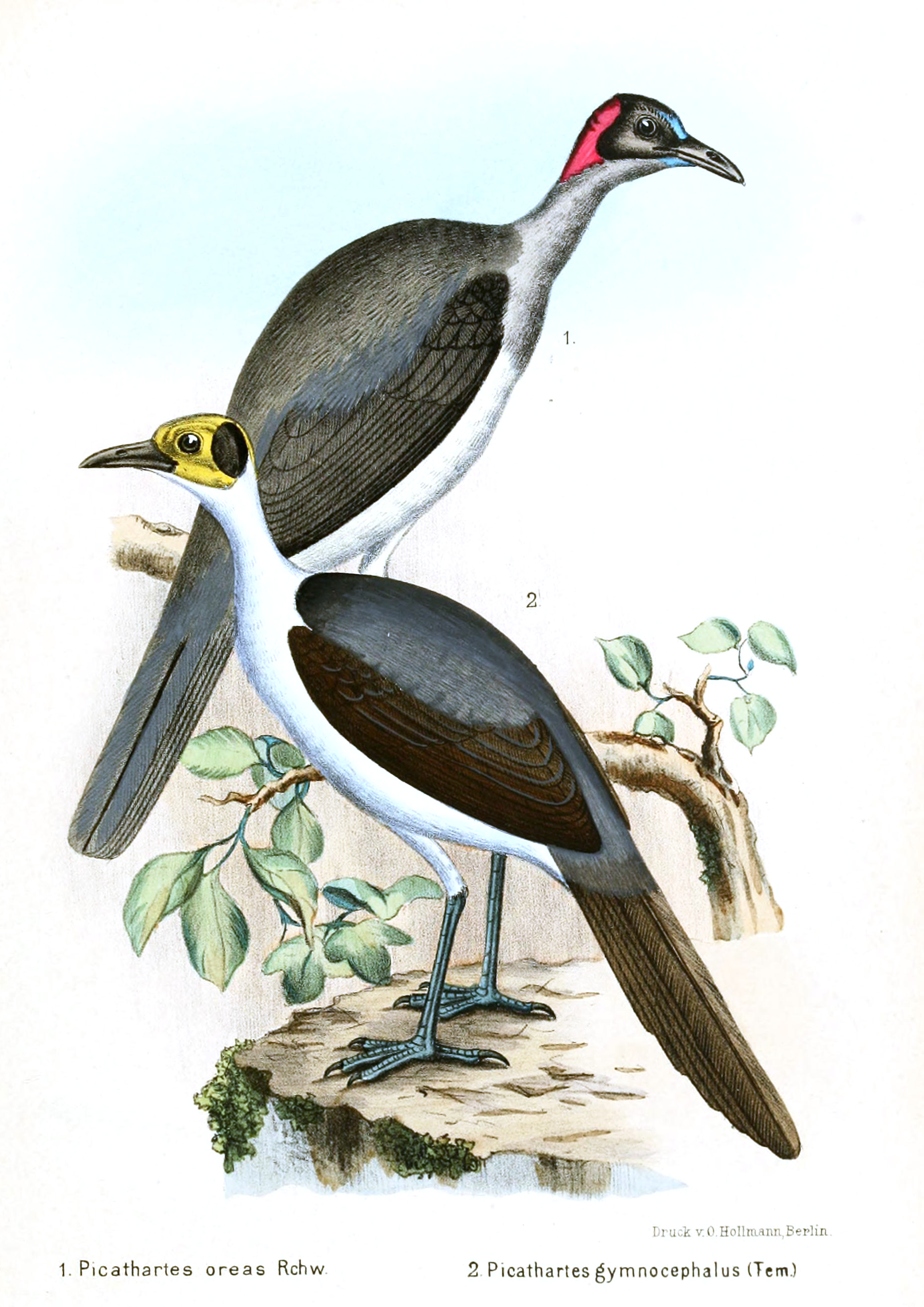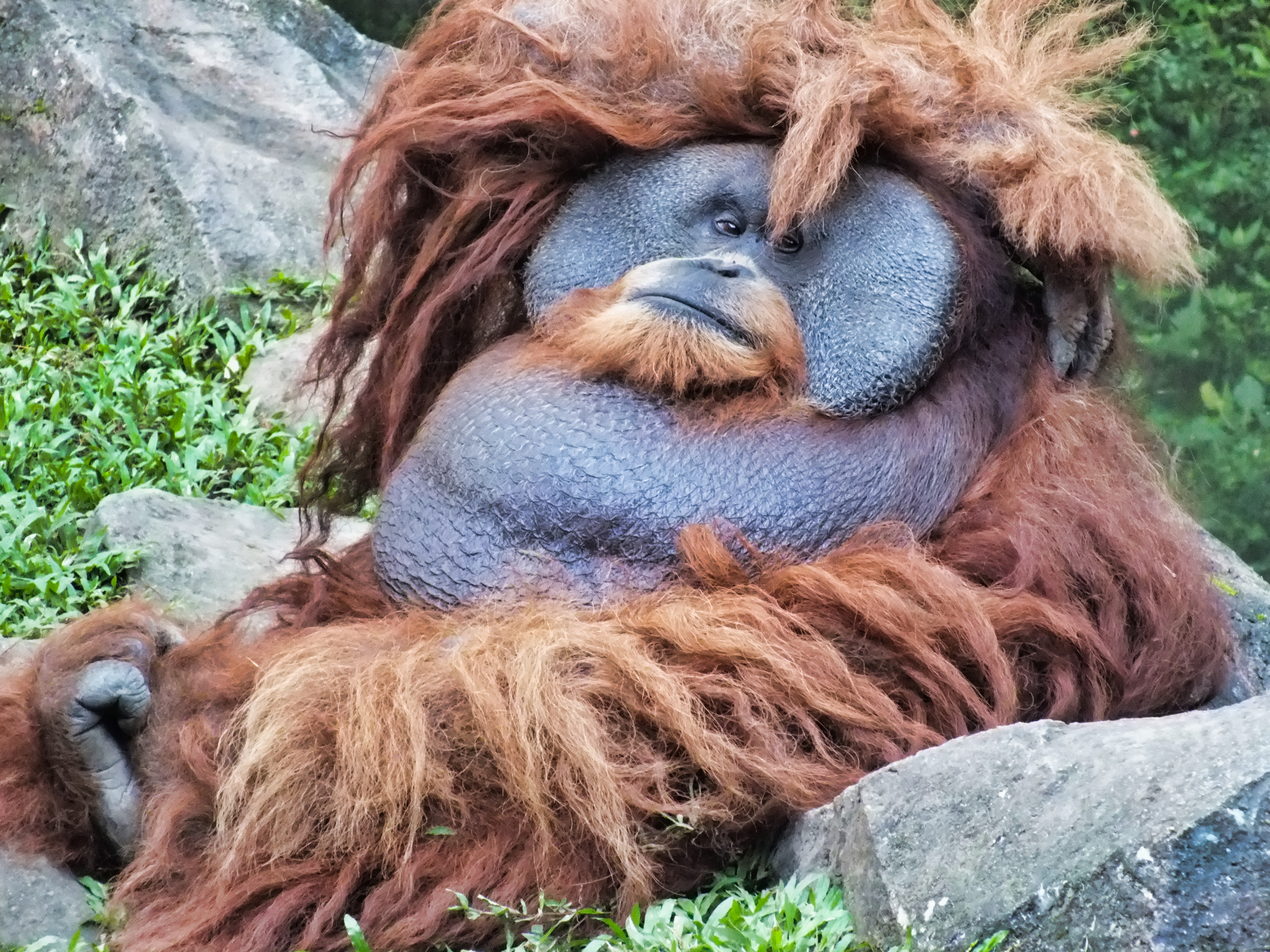|
Eupetes
The rail-babbler or Malaysian rail-babbler (''Eupetes macrocerus'') is a strange, rail-like, brown and pied ground-living bird. It is the only species in the genus ''Eupetes'' and family Eupetidae. It lives on the floor of primary forests in the Malay Peninsula and Sumatra (the nominate subspecies ''macrocerus''), as well as Borneo (ssp. ''borneensis''). It is distantly related to African crow-like birds. Its population has greatly decreased because much of the lowland primary forest has been cut, and secondary forests usually have too dense a bottom vegetation or do not offer enough shade to be favourable for the species. However, it is locally still common in logged forest or on hill-forest on slopes, and probably not in immediate danger of extinction. The species is poorly known and rarely seen, in no small part due to its shyness. Taxonomy Opinions on the correct taxonomic placement for the rail-babbler have differed. At one time, it was placed in the Old World babbler ... [...More Info...] [...Related Items...] OR: [Wikipedia] [Google] [Baidu] |
Rockfowl
The picathartes, rockfowl, or bald crows are a small genus of two passerine bird species forming the family Picathartidae found in the rain-forests of tropical west and central Africa. They have unfeathered heads, and feed on insects and invertebrates picked from damp rocky areas. Both species are totally non-migratory, being dependent on a specialised rocky jungle habitat. Both species are listed as vulnerable to extinction on the IUCN Red List. Taxonomy and systematics The taxonomic position of the clade and its two species has been confusing. At various times, it has been grouped with the babblers, flycatchers, starlings, crows and others before being placed in a family of its own. Serle in 1952 thought it resembled the Asian genus ''Eupetes'' while Sibley used egg-albumin protein similarity, determined by electrophoresis, to suggest that it belonged to the Timaliidae. Olson revived the idea that it was related to ''Eupetes'' in 1979. A molecular sequence based study sugg ... [...More Info...] [...Related Items...] OR: [Wikipedia] [Google] [Baidu] |
Whipbirds
Psophodidae is a family of passerine birds native to Australia and nearby areas. It has a complicated taxonomic history and different authors vary in which birds they include in the family. In the strictest sense, it includes only the 5 or 6 species of whipbirds and wedgebills (''Psophodes'' and '' Androphobus''), but some authors also include the quail-thrushes (''Cinclosoma''), 8 species of ground-dwelling birds found in Australia and New Guinea, and the jewel-babblers (''Ptilorrhoa''), 3 or 4 species found in rainforest in New Guinea. Others place them in their own family, the Cinclosomatidae. The Malaysian rail-babbler (''Eupetes macrocerus'') was formerly sometimes placed in this family, which would then be called Eupetidae. Taxonomy The quail-thrushes, jewel-babblers, whipbirds and wedgebills were traditionally included with the logrunners (''Orthonyx'') in the family Orthonychidae.Roberson, Don (2004Quail-thrushes Cinclosomatidae Bird Families of the World. Accessed 4 Jan ... [...More Info...] [...Related Items...] OR: [Wikipedia] [Google] [Baidu] |
Cinclosomatidae
Cinclosomatidae is a family of passerine birds native to Australia and New Guinea. It has a complicated taxonomic history and different authors vary in which birds they include in the family. It includes the quail-thrushes and jewel-babblers. Taxonomy The quail-thrushes, jewel-babblers, whipbirds and wedgebills were traditionally included with the logrunners (''Orthonyx'') in the family Orthonychidae.Roberson, Don (2004Quail-thrushes Cinclosomatidae Bird Families of the World. Accessed 4 January 2010. Sometimes the Malaysian rail-babbler and blue-capped ifrit (''Ifrita kowaldi'') were also included in the family. In 1985, Sibley and Ahlquist found that the logrunners were not related to the others and included only the logrunners in the Orthonychidae.Christidis, Les & Walter Boles (2008) ''Systematics and Taxonomy of Australian Birds'', CSIRO Publishing. They treated the others as the subfamily Cinclosomatinae within their expanded family Corvidae. A number of authors later tr ... [...More Info...] [...Related Items...] OR: [Wikipedia] [Google] [Baidu] |
Charles Lucien Bonaparte
Charles Lucien Jules Laurent Bonaparte, 2nd Prince of Canino and Musignano (24 May 1803 – 29 July 1857), was a French naturalist and ornithologist. Lucien and his wife had twelve children, including Cardinal Lucien Bonaparte. Life and career Bonaparte was the son of Lucien Bonaparte and Alexandrine de Bleschamp. Lucien was a younger brother of Napoleon I, making Charles the emperor’s nephew. Born in Paris, he was raised in Italy. On 29 June 1822, he married his cousin, Zénaïde, in Brussels. Soon after the marriage, the couple left for Philadelphia in the United States to live with Zénaïde's father, Joseph Bonaparte (who was also the paternal uncle of Charles). Before leaving Italy, Charles had already discovered a warbler new to science, the moustached warbler, and on the voyage he collected specimens of a new storm-petrel. On arrival in the United States, he presented a paper on this new bird, which was later named after Alexander Wilson. Bonaparte then set about ... [...More Info...] [...Related Items...] OR: [Wikipedia] [Google] [Baidu] |
Heath Forest
Heath forest is a type of tropical moist forest found in areas with acidic, sandy soils that are extremely nutrient-poor. Notable examples are the Rio Negro campinarana of the Amazon Basin in South America, and the Sundaland heath forests (also known as ''Kerangas'' forests) of Borneo Borneo (; id, Kalimantan) is the third-largest island in the world and the largest in Asia. At the geographic centre of Maritime Southeast Asia, in relation to major Indonesian islands, it is located north of Java, west of Sulawesi, and e ... and neighboring islands. External links * * Tropical and subtropical moist broadleaf forests {{ecoregion-stub ... [...More Info...] [...Related Items...] OR: [Wikipedia] [Google] [Baidu] |
Natuna Islands
''(Sacred Ocean, Fortune Land) , image_map = , pushpin_map = Indonesia Riau Islands#Indonesia Sumatra#Indonesia#South China Sea , pushpin_map_caption = Location in Riau Islands##Location in Sumatra##Location in Indonesia##Location in South China Sea , map_caption = Interactive map , pushpin_label = , pushpin_label_position = left , coordinates = , coor_pinpoint = , coordinates_footnotes = [Baidu] |
Greater Sundas
The Greater Sunda Islands (Indonesian and Malay: ''Kepulauan Sunda Besar'') are four tropical islands situated within Indonesian Archipelago, in the Pacific Ocean. The islands, Borneo, Java, Sulawesi and Sumatra, are internationally recognised for their ecological diversity and rich culture. Together with the Lesser Sunda Islands to their southeast, they comprise the archipelago known as the Sunda Islands. Mainly part of Indonesia, each island is diverse in its ethnicity, culture and biological attributes. The islands have a long and rich history which has shaped their cultural backgrounds. Sumatra Geography Sumatra is the second largest, most westerly oriented Indonesian island, and the sixth largest island globally. Spanning , Sumatra is home to human civilisations and tropical rainforests, which harbour a huge range of wildlife. Its close proximity to the Equator (1º S, 101º E) dictates its tropical climate, so that it is subject to the forces of climatic events El Niño ... [...More Info...] [...Related Items...] OR: [Wikipedia] [Google] [Baidu] |
Malaysia
Malaysia ( ; ) is a country in Southeast Asia. The federation, federal constitutional monarchy consists of States and federal territories of Malaysia, thirteen states and three federal territories, separated by the South China Sea into two regions: Peninsular Malaysia and Borneo's East Malaysia. Peninsular Malaysia shares a land and maritime Malaysia–Thailand border, border with Thailand and Maritime boundary, maritime borders with Singapore, Vietnam, and Indonesia. East Malaysia shares land and maritime borders with Brunei and Indonesia, and a maritime border with the Philippines and Vietnam. Kuala Lumpur is the national capital, the country's largest city, and the seat of the Parliament of Malaysia, legislative branch of the Government of Malaysia, federal government. The nearby Planned community#Planned capitals, planned capital of Putrajaya is the administrative capital, which represents the seat of both the Government of Malaysia#Executive, executive branch (the Cabine ... [...More Info...] [...Related Items...] OR: [Wikipedia] [Google] [Baidu] |
Thailand
Thailand ( ), historically known as Siam () and officially the Kingdom of Thailand, is a country in Southeast Asia, located at the centre of the Indochinese Peninsula, spanning , with a population of almost 70 million. The country is bordered to the north by Myanmar and Laos, to the east by Laos and Cambodia, to the south by the Gulf of Thailand and Malaysia, and to the west by the Andaman Sea and the extremity of Myanmar. Thailand also shares maritime borders with Vietnam to the southeast, and Indonesia and India to the southwest. Bangkok is the nation's capital and largest city. Tai peoples migrated from southwestern China to mainland Southeast Asia from the 11th century. Indianised kingdoms such as the Mon, Khmer Empire and Malay states ruled the region, competing with Thai states such as the Kingdoms of Ngoenyang, Sukhothai, Lan Na and Ayutthaya, which also rivalled each other. European contact began in 1511 with a Portuguese diplomatic mission to Ayutthaya, w ... [...More Info...] [...Related Items...] OR: [Wikipedia] [Google] [Baidu] |
Supercilium
The supercilium is a plumage feature found on the heads of some bird species. It is a stripe which runs from the base of the bird's beak above its eye, finishing somewhere towards the rear of the bird's head.Dunn and Alderfer (2006), p. 10 Also known as an "eyebrow", it is distinct from the eyestripe, which is a line that runs across the lores, and continues behind the eye. Where a stripe is present only above the lores, and does not continue behind the eye, it is called a supraloral stripe or simply supraloral. On most species which display a supercilium, it is paler than the adjacent feather tracts. The colour, shape or other features of the supercilium can be useful in bird identification. For example, the supercilium of the dusky warbler, an Old World warbler species, can be used to distinguish it from the very similar Radde's warbler. The dusky warbler's supercilium is sharply demarcated, whitish and narrow in front of the eye, becoming broader and more buffy towards the ... [...More Info...] [...Related Items...] OR: [Wikipedia] [Google] [Baidu] |
Plumage
Plumage ( "feather") is a layer of feathers that covers a bird and the pattern, colour, and arrangement of those feathers. The pattern and colours of plumage differ between species and subspecies and may vary with age classes. Within species, there can be different colour morphs. The placement of feathers on a bird is not haphazard, but rather emerge in organized, overlapping rows and groups, and these are known by standardized names. Most birds moult twice a year, resulting in a breeding or ''nuptial plumage'' and a ''basic plumage''. Many ducks and some other species such as the red junglefowl have males wearing a bright nuptial plumage while breeding and a drab ''eclipse plumage'' for some months afterward. The painted bunting's juveniles have two inserted moults in their first autumn, each yielding plumage like an adult female. The first starts a few days after fledging replacing the ''juvenile plumage'' with an ''auxiliary formative plumage''; the second a month or so l ... [...More Info...] [...Related Items...] OR: [Wikipedia] [Google] [Baidu] |
Monotypic
In biology, a monotypic taxon is a taxonomic group (taxon) that contains only one immediately subordinate taxon. A monotypic species is one that does not include subspecies or smaller, infraspecific taxa. In the case of genera, the term "unispecific" or "monospecific" is sometimes preferred. In botanical nomenclature, a monotypic genus is a genus in the special case where a genus and a single species are simultaneously described. In contrast, an oligotypic taxon contains more than one but only a very few subordinate taxa. Examples Just as the term ''monotypic'' is used to describe a taxon including only one subdivision, the contained taxon can also be referred to as monotypic within the higher-level taxon, e.g. a genus monotypic within a family. Some examples of monotypic groups are: Plants * In the order Amborellales, there is only one family, Amborellaceae and there is only one genus, '' Amborella'', and in this genus there is only one species, namely ''Amborella trichopoda. ... [...More Info...] [...Related Items...] OR: [Wikipedia] [Google] [Baidu] |



.jpg)
